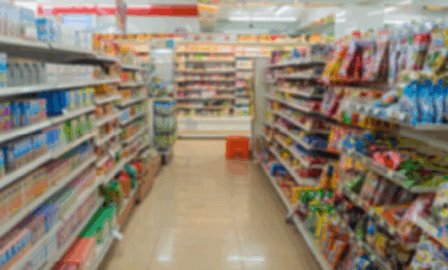Three Measures to Future-Proof your Digital Strategy
Both incumbent and digitally native brands alike have been challenged to create and execute a digital strategy to compete in the digital age. Year over year eCommerce sales have increased because consumers seek convenient delivery to their home. COVID-19 has caused a significant uptick in eCommerce sales as the world is told to now stay at home indefinitely. We continue to see a need for CPG brands to boost their online presence not just to manage consumer needs during this pandemic, but to engage with them in a way that sticks in our “new normal” world. CPG brands should evaluate their eCommerce and DTC selling strategy to reach consumers and build greater loyalty. Much of the population is now reliant on digital ordering to sustain their day-to-day, which has put increased pressure on site traffic, product availability, and focus on value-added offerings. With this in mind, we believe it’s important to re-evaluate your consumer’s purchasing habits and make data-driven decisions to adapt digital commerce and engagement tactics.
According to a Gartner COVID-19 consumer sentiment analysis, consumers are more worried about product shortages in brick and mortar stores than they are about online products. This means consumers have an expectation that brands can maintain a steady stream of supply online despite heightened demand. While it’s too soon to know for certain what the future will hold, there are a few key steps to future-proof your eCommerce presence and maintain trust with consumers after COVID-19 passes.
Make Sure Your Digital Strategy is Built for the Future of eCommerce
Studies show that consumers across all demographics are likely to avoid shopping centers and malls given the large impact this pandemic has on their health. This trend is likely to continue through the COVID-19 pandemic, and the increased online shopping behavioral change will stick for many consumers long beyond the health and safety impact of COVID-19. For CPG brands, the focus should be on how to respond to a future that includes changing behavioral patterns favoring eCommerce.
With this purchasing shift in mind, make sure to assess consumer purchasing habits to see if any substantial changes in online sales stick. From there, evaluate how you can invest in your promotional and sales strategy to ultimately increase conversion in the long-term. Taking proactive measures to identify consumer needs may chart out new campaign or product opportunities.
Measure #1: Analyze Consumer and Sales Data
Organizations with digital sales need to strategically look at revenue by channel, engagement rates, and clickthrough rates to deliver resonating online experiences. As digital commerce demand returns to the new normal after COVID-19, companies who have invested in the most profitable and active digital channels will see sustained success.
To understand where customers are buying and where they want to buy in the future, leverage advanced analytics to take a look at transactional data. From there, use those insights in your digital strategy to make informed decisions around consumer engagement and segment targeting. Supplementing analysis of demographic data with this transactional context provides a healthier picture of target customers and their purchasing needs. As new demand patterns surface, CPG brands can understand where and when consumers are shopping online.
Given that today many consumers are more conservatively shopping for the essentials, consider evaluating how you can position products and deals which add value to consumers during this time. Make the most of the consumers additional screen time by engaging through videos on channels they are frequenting such as YouTube, Pinterest, or Instagram. Pay close attention to acquisition metrics to see who your leads are and pinpoint what is different from normal sales in key channels. Within each channel you also should watch any patterns or changes in conversion rates. Assessing both acquisition and conversion metrics together will give you a picture of how to adapt as needs and wants shift in time of volatility. To emerge in a position of strength, organizations must have an accurate vision of demand through the digital channels available, and a plan for growing and protecting those offerings moving forward.
Measure #2: Sustain and Grow Brand Loyalty through Stability
It’s no secret that brand loyalty has been on the decline in recent years, in part because consumers now tend to value convenience as a major factor in shopping. Although the pandemic is accelerating this erosion of brand loyalty – as frequent stockouts force consumers to pivot from their typically preferred brands to whatever is available – it also presents a unique opportunity for smaller, lesser-known brands to increase their brand loyalty. In fact, a national survey by PEOPLE Insiders Panel has revealed that 81% of consumers are currently open to buying brands that they have never purchased before. Additionally, a study by Exceedra has revealed that as many as 50% of consumers have tried new brands since the onset of the pandemic, and 63% of them plan to continue buying the brand when the pandemic subsides.
In time of uncertainty, consumers have sought a reliable source of product replenishment which has led to increased interest in subscription-based purchasing. Offering subscriptions is another way to increase lasting brand loyalty, as consumers automatically become regular purchasers of your product. A Nielsen survey shows about four in 10 online consumers use online subscriptions today, and an additional 36% were willing to do so in the next two years. Meal kit delivery subscriptions, which had previously been on the decline, are seeing immense upticks in enrollment as consumers do their best to stay home, with Blue Apron’s stock jumping from $2.50 to $16.25 in March alone. Take this opportunity to offer subscriptions for products that consumers are searching for a steady supply of.
In addition to maintaining a steady supply of products for subscribers, focus marketing efforts towards pulling in new consumers, and demonstrating your value and strength to these consumers. Look at the data insights you’ve gathered offer tailored promotions directly to those new subscribers. People are seeking comfort in a steady stream of goods delivered in times where even Amazon is struggling to meet demand. The brands who succeed post-pandemic are those who maintained trust with and added value to consumers in time of need. There is an opportunity to not only increase your brand love during these uncertain times, but to build a brand loyalty that will outlast the current crisis.
Measure #3: Provide Sustainable and Community-Conscious Offerings
Every organization has a corporate responsibility to their employees, consumers, and community. CPG brands should continuously evaluate how they tailor both their product offerings and digital strategy experiences in a way that shows empathy and builds trust. Whether you’re a digitally native brand or a brand looking to break into DTC, you should evaluate how to provide opportunities for consumers to contribute to their local community. At present, many brands are banding together to support frontline workers and provide a sense of community for those in isolation at home. For example, DTC brand Allbirds is running a Better Together – Buy One Give One campaign that empowers consumers to support healthcare worker donations.
It’s also critical to keep sustainability in mind through product sourcing, packaging, and messaging. Consumers supporting companies that are vocal about their increased sustainability focus during the pandemic. In fact, 75% of consumers want companies to maintain changes that have resulted in a positive environmental impact. This is tied to the mindset shift during this pandemic, in which consumers are more focused on limiting food waste, making more sustainable choices, and supporting local communities. Loop, the reusable packaging subscription platform, is seeking to address this consumer need by expanding its offering across the U.S. this summer.
While these tactics are relevant to the current COVID-19 situation, they are likely to become part of the new normal for engagement. Sustainability has been a growing trend pre-pandemic. As consumers rise from the pandemic, they will be more conscious of spending, product origin, and community support.
Brands who are transparent, authentic, and empathetic will come out of this situation with greater consumer trust. Building advocacy through online channels now can show dividends in the future as a complement to traditional brick-and-mortar sales.
Looking Ahead: Key Questions to Consider in your Digital Strategy
We’ve noted a few key digital strategy fundamentals to get right now during the pandemic which will set a foundation once the new normal sets in. COVID-19 should be considered catalyst for DTC and CPG brands alike to look at the following questions:
- Are new shoppers interacting with my brand for the first-time using eCommerce channels, or are existing shoppers shifting buying behavior a new channel? If new, be sure to adapt to their unique needs and make sure your brand value shines.
- What existing eCommerce capabilities do I have today, and are they robust enough to meet increased online demand?
- Are online product descriptions and images clear enough for shoppers to search and purchase? Your product information management processes will influence whether consumers trust your products, especially those who are new and do not yet trust your brand.
- Is the right data analytics infrastructure in place to assess consumer purchasing habits and adapt messaging, promotions, or product placement accordingly?
- Is your brand messaging consistent, authentic, and empathetic during these uncertain times? Be sure not to overwhelm your audience with messages, but rather provide a balance of transparency and value-added content.
- How can I translate my brand’s value proposition through unique online experiences to engage consumers online in a sustainable way?
- How will my brand’s sales and promotional strategies change or stay the same once the “new normal” is reached?
At the heart of it, CPG brands who can adapt their online channels to meet unique consumer needs may create lasting impacts for future purchasing habits. For CPG brands who have not stepped into the DTC online sales experience, now is the time to quickly adapt so you’re set up for success in the future. Every brand should be continuously evaluating plans to manage during the pandemic and emerge strong. When planning for the next few months and next few years, keep in mind how you can exhibit your core values through digital strategy channels and make data-driven decisions to grow eCommerce sales.
Have questions around your digital strategy? Ask an Expert
Subscribe to Clarkston's Insights
Contributions by Megan Angevine, Shatakshi Shekhar, and Spencer Anderson.



